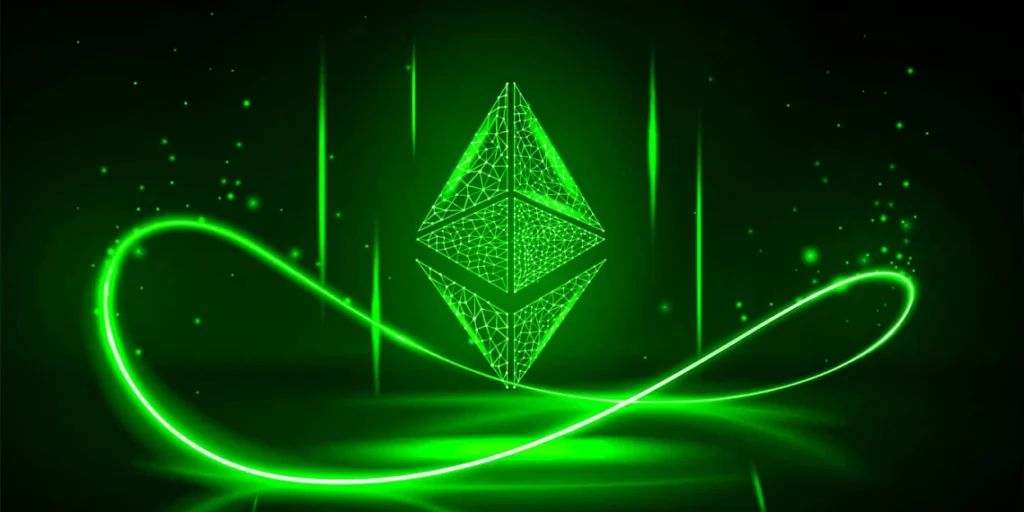
Ethereum’s most significant upgrade will mark the end of Proof-of-Work consensus and usher in an eco-friendly Proof-of-Stake system.
It’s undoubtedly exciting times for crypto, with a critical software upgrade in Ethereum’s history rolling out soon.
The smart contracts platform has maintained pole position for years running. Now, it looks primed to continue its impressive run through a series of planned upgrades, known as Ethereum 2.0 or Eth2. Ethereum devs will roll out the updates in phases towards solving the in/famous ‘blockchain trilemma.’
For the uninformed, the blockchain trilemma is the widespread belief that decentralized networks can’t provide the three benefits of security, decentralization, and scalability without sacrificing one to accommodate the remaining two. And the Merge is crucial to solving this trilemma and achieving Ethereum’s clear vision of a fully scalable, secure, and sustainable ecosystem.
This article will take you deep into the Ethereum Merge, its impact on the crypto space, and how it will affect the environment.
But first, let’s briefly look at what the Merge is.

What Is the Ethereum Merge?
The Ethereum Merge, or simply the Merge, will unite Ethereum’s existing execution layer (i.e., the Mainnet) with its parallel consensus layer, the Beacon Chain. Currently, the Ethereum blockchain relies on Proof-of-Work consensus using high-end GPUs and ASICS to verify transactions and mine new blocks. Through the Merge, the network will transition to a less energy-intensive and efficient Proof-of-Stake protocol.
The first phase of the Eth2 upgrade was the Beacon Chain, a separate PoS sidechain launched on December 1, 2020. In March 2022, Ethereum core developer Tim Beiko confirmed on Twitter that the second phase — aptly named the Merge — will likely take place somewhere in Q3.
While the first phase signaled the move to a Proof-of-Stake mechanism, the Merge will merge the Beacon Chain with the Ethereum Mainnet. This move will address setbacks like high gas fees and network congestion and lay the groundwork for further scalability enhancements through sharding.
The Merge will take place once the final testnet merge is successful. Much like simulations, developers use testnets (alternative blockchains) to test-run smart contracts and protocol upgrades in a sandboxed blockchain environment before Mainnet deployment.
So far, there have been two testnet merges: the Ropsten testnet successfully moved to Proof-of-Stake in June, while the Sepolia testnet merged with the Beacon Chain on July 7. The final Goerli/Prater testnet merge will occur between August 6 and 12.
“Why Merge?”
It probably won’t surprise me to hear you musing out loud as you read this article — “why Merge?”
Let’s take a trip down memory lane to understand why the Merge has to happen.
Satoshi Nakamoto initially designed blockchain technology to replace the crumbling traditional financial system, a distributed ledger for transacting value without a central authority.
Thanks to Ethereum, however, smart contracts came onto the scene to propel many decentralized applications (dApps) in various sectors like financial services, healthcare, and supply chain management.
The emergence of this global supercomputer has set in motion a series of events leading to the creation of the decentralized web — Web 3.0. Ethereum’s rise broadened the vision of blockchain beyond financial services towards creating a robust ecosystem of dApps across virtually every industry known to man.
However, as the number of users and transaction activity grew, the network suffered from performance drawbacks and congestion. At some point, it wasn’t uncommon to see gas fees quadruple the actual transaction amount. Even worse, the mining process became energy-intensive as miners struggled to verify transactions on time.
The Merge will remove these limitations towards the proliferation of more Web3 projects and ultimately promote crypto adoption in the mainstream.
More specifically, here’s how it will impact the crypto space.

How Important Is the Ethereum Merge to Crypto?
Presently, several blockchains use PoS, although not at scale. Ethereum’s successful migration will show that the crypto space can adopt the Proof-of-Stake system on a much larger scale. The move will likely foster widespread network adoption, allowing newer Web3 projects to favour the blockchain over others.
Another notable point is the lowered entry barrier for miners. As it stands, Ethereum mining remains a luxury, requiring a large budget. Mining equipment, power supply, cooling systems, and logistics may drive the startup cost well past the million-dollar mark.
On the contrary, you only need 32 ETH (about $51,700 at the time of writing) to become a validator under the new PoS protocol; you don’t need specialized mining hardware or a constant power supply. Small-time HODLers can participate in Eth2 consensus as delegates by pooling together their ether holdings.
The PoW consensus currently used by the Ethereum network requires miners to solve a computational problem using specialized mining ‘rigs.’ Thus, miners must burn a lot of energy to decide who adds the next block to the blockchain.
According to the Ethereum Foundation, Ethereum will consume ~99.95% less energy following The Merge and “use dramatically less carbon to be more secure.” The reduced environmental impact alone gives Ethereum a crucial advantage over the current crop of PoW chains.
Finally, the Merge’s potential impact on ETH’s future price action is looking positive. For one, the “triple halvening” happens after the Merge, which will see fewer ETH issued in the future as mining issuance drops drastically. Once Ethereum switches over to PoS completely, miners will no longer receive ether as block rewards.
Overall, ETH would become a deflationary asset with the post-Merge inflation rate potentially dropping into negative figures. The combined effect of low block rewards for stakers and burning most of the transaction fees through the EIP-1559 could have the same effect as three consecutive BTC halvings (got it now?)
The triple halvening makes sense since there’s no more need for mining, but you can’t please everyone, so it also makes sense that many PoW diehards will most likely continue with the PoW Ethereum chain.
In summary, with the Merge upgrade, we expect a more diverse network that is not only secure and sustainable but also scalable, satisfying the three benefits of decentralized systems. Ethereum 2.0 will likely introduce a stabler market where institutional investors flock to the crypto space in their numbers, and scarcity of supply drives up ETH’s price.